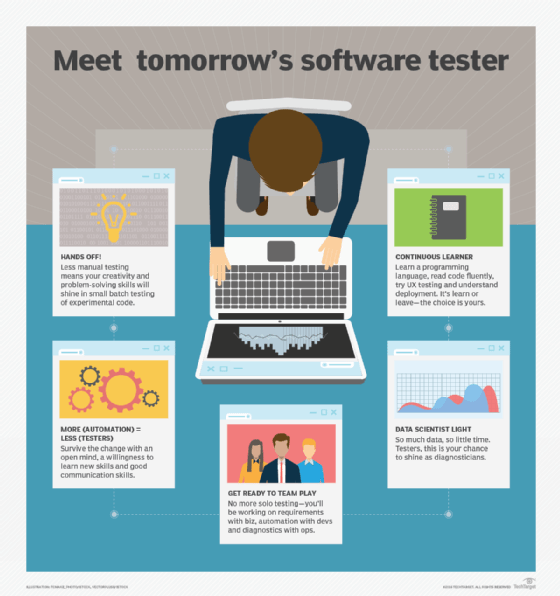
Getty Images/iStockphoto
Best practices for automated end-to-end testing
Advanced end-to-end testing can save a company time and money, but it isn't easy to implement. Let's look at some of the important elements of test design.
At the time of an application's release, the components may work correctly. But can they work together? And does the application correctly work with all integrated apps?
End-to-end testing is about instilling confidence that the release is ready for production by finding problems and defects during iterative testing. It reduces risk by verifying the workflow, increases overall test coverage, detects defects and determines dependencies.
Let's examine how to design and build an end-to-end test, look at how automation fits into an end-to-end test strategy and review best practices.
How to design an end-to-end test
To design an effective end-to-end test, first determine and document both functional and nonfunctional requirements. It is important to assess the horizontal business workflows but also the performance, security and UX requirements.
Next, create test scenarios. Develop these scenarios to validate the relationships between features. Repeat this process for each workflow. Then, develop test cases to exercise the test scenarios, being sure to include all possible conditions.
End-to-end test suites require many test cases because there are various paths within the workflows. Testing end to end for an email system, for example, includes the following:
- Validating login.
- Accessing the inbox.
- Composing emails.
- Replying to emails.
- Searching and filtering.
- Creating folders and moving emails among folders.
- Reviewing sent mail and deleting emails.
It is also important to build test scenarios for the nonfunctional requirements. These scenarios include, but are not limited to, data input and response times, time to execute the workflow and security of data transmits through the workflow. In our email system example, test scenarios might include speeds of sending and receiving messages, as well as recognition of spam.
Test environment and data strategies are critical aspects of a comprehensive end-to-end testing plan. The test environment must mirror production as closely as possible. It is preferable to perform user acceptance testing or use a stage environment rather than the environment in which the system test was executed.
This level of environment must be for all integrations. It is inadequate to use a production-like environment for the main application but lesser environments for the integrated environments. Data must mirror production, and data in all applicable states should be used for full test coverage.
The sequencing of data is also an important consideration in the test strategy. Include tests that follow the data through its completed, error-free path, as well as error-path states.

Test automation in end-to-end testing
The high volume of test cases involved in end-to-end testing makes automation necessary. Just be certain that the automation is reusable and easily maintained.
The same cost-benefit considerations apply to automating end-to-end testing as to automating regression test suites, as well as overall workflow automation. Theoretically, automated end-to-end testing is a more valuable option for a company since it would not have to pay teams to repeatedly look over testing, although manual testing should still be done.
It is best to select a test automation tool as early as possible in the software development process. Ideally, test automation should begin during system testing. This enables the automated tests used for the end-to-end test to be selected from the available test suites. Only a limited number of tests need to be scripted specifically for the end-to-end automation effort.
Leapwork and Datadog are examples of automation tools that are especially useful for end-to-end testing. Leapwork is a no-code tool that tests across multiple browsers, platforms, OSes and web applications. It uses a visual language that helps to simulate the experience of the user. Datadog is also a no-code tool that automates functional workflows and offers synthetic monitoring features.
Best practices for end-to-end testing
When designing an end-to-end test strategy, a few best practices to consider include the following:
- Balance the importance of data flows to workflows. Consider data states, as well as batch and data processing, from all upstream and downstream integrations. Include tests for functional and nonfunctional requirements.
- Test the connections within and across the subsystems. This includes interactions between the networks and firewalls.
- Plan adequate time. Allow time for end-to-end testing, defect documentation, remediation and retesting. Defects found in end-to-end testing, especially those involving more than one subsystem, can be difficult to remediate and time-consuming to test.
- Include test optimization in the test strategy. Because of the large number of test cases in an end-to-end test, it is critical to get the greatest amount of test coverage out of every test case.
- Remember edge cases and the areas of high defect density. These are areas where regression defects may appear and require further attention.
- Automate but always include a manual component. End-to-end tests must keep the user in mind.





